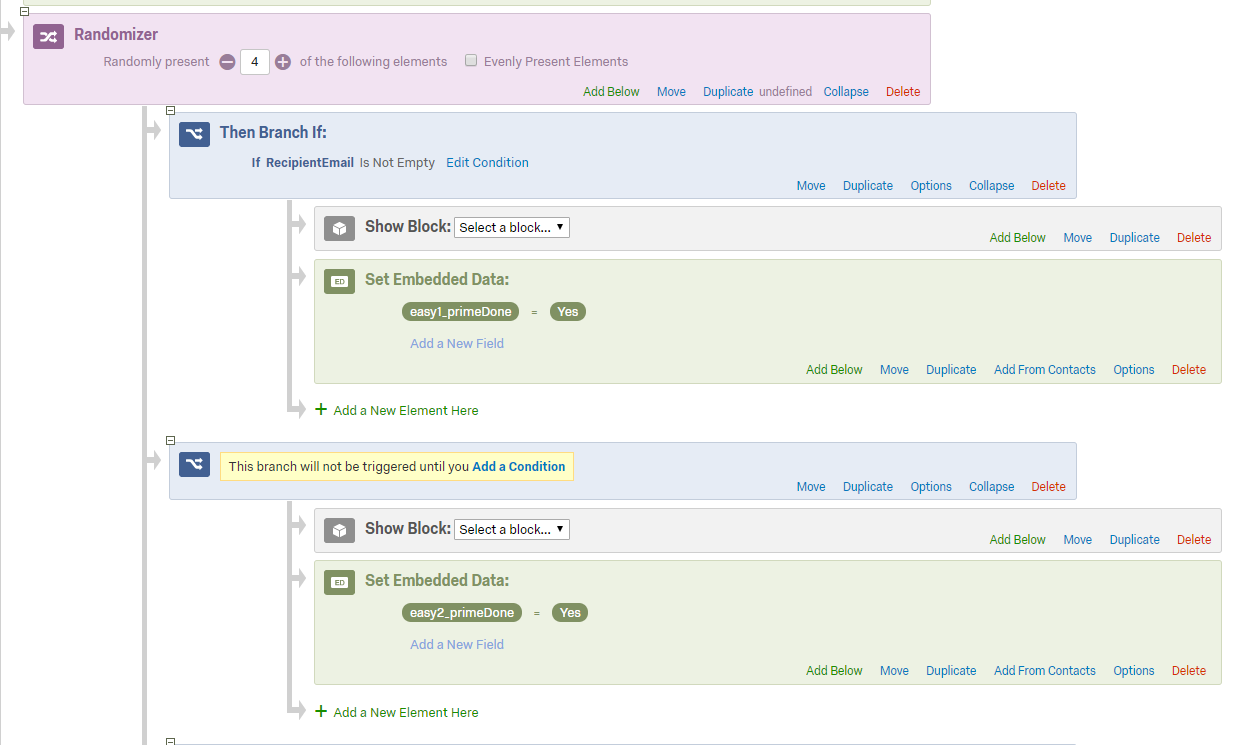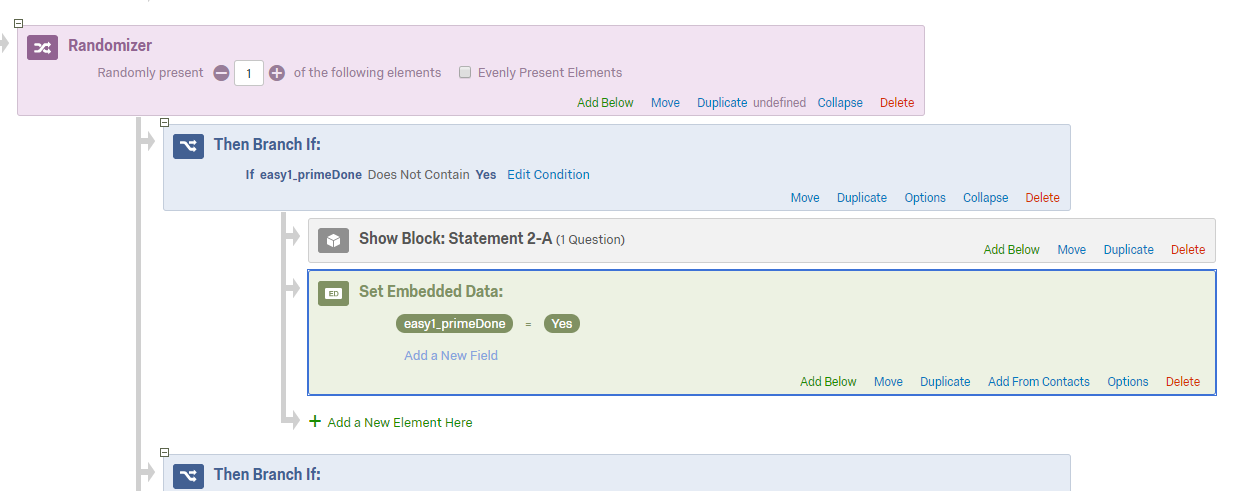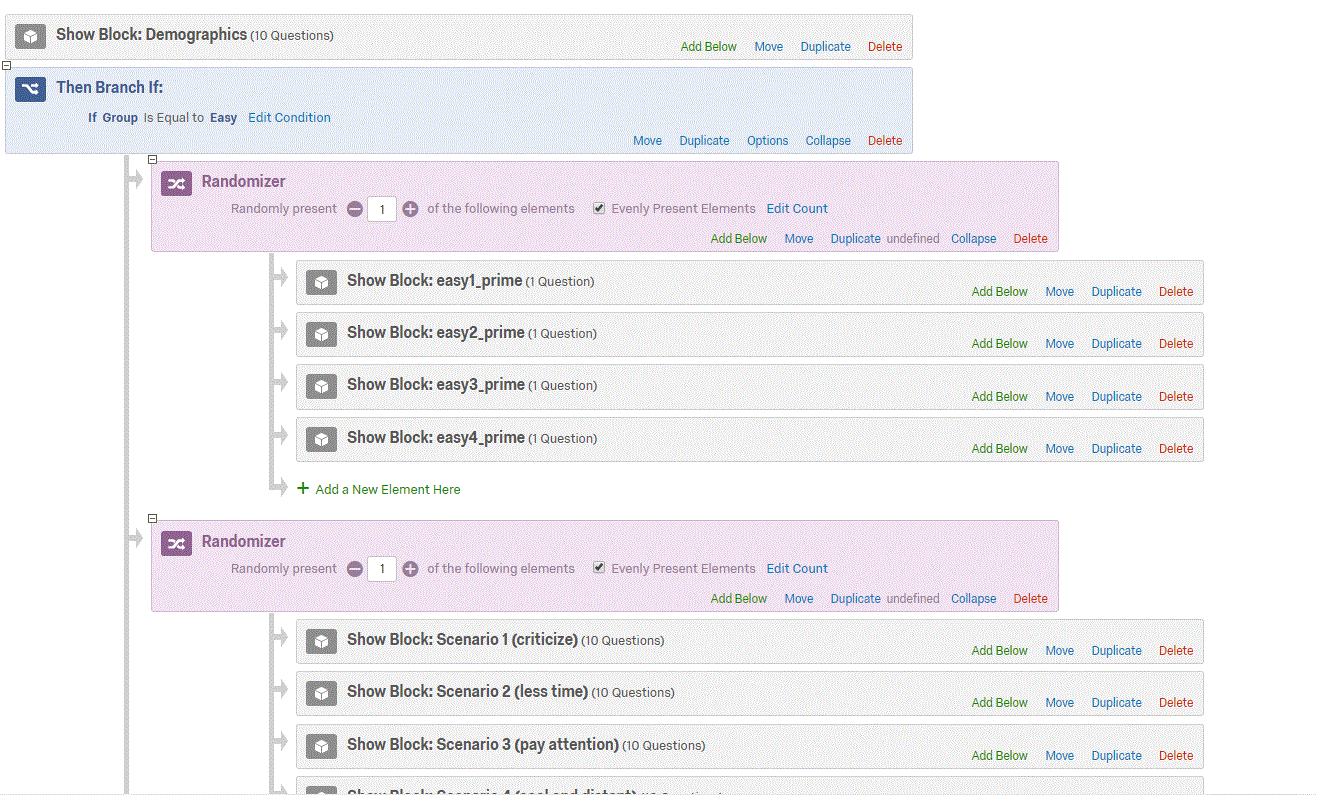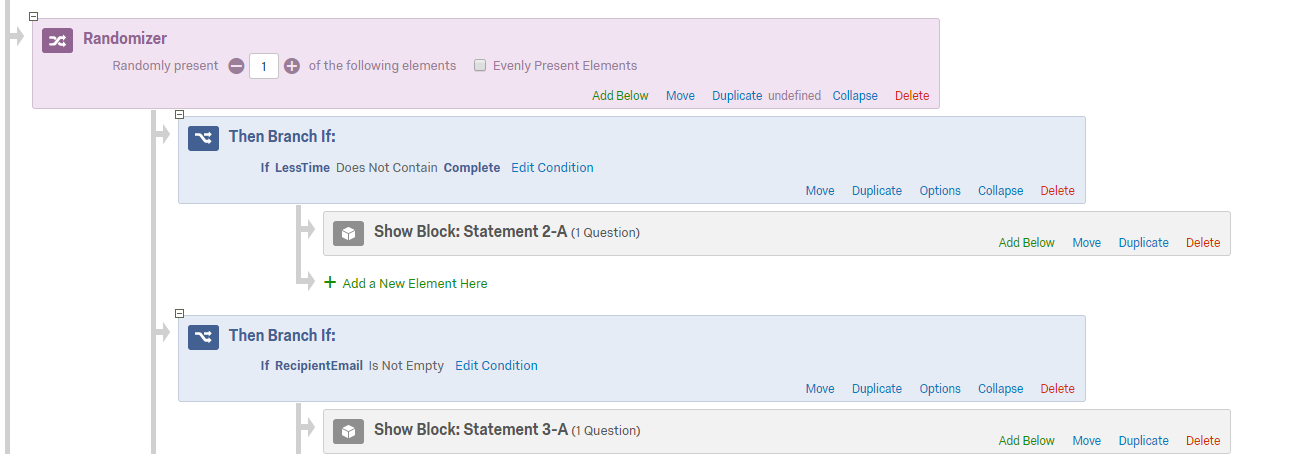Randomization without replacement
Best answer by JenCX
 Then for the remaining 3 sets of randomizers, you'll just double-check that your Embedded Data variable wasn't used for each option, and be sure to set the tag at the end of the branch again:
!
Then for the remaining 3 sets of randomizers, you'll just double-check that your Embedded Data variable wasn't used for each option, and be sure to set the tag at the end of the branch again:
!
Sign up
Already have an account? Login

Welcome! To join the Qualtrics Experience Community, log in with your existing Qualtrics credentials below.
Confirm your username, share a bit about yourself, Once your account has been approved by our admins then you're ready to explore and connect .
Free trial account? No problem. Log in with your trial credentials to join.
No free trial account? No problem! Register here
Already a member? Hi and welcome back! We're glad you're here 🙂
You will see the Qualtrics login page briefly before being taken to the Experience Community
Login with Qualtrics

Welcome! To join the Qualtrics Experience Community, log in with your existing Qualtrics credentials below.
Confirm your username, share a bit about yourself, Once your account has been approved by our admins then you're ready to explore and connect .
Free trial account? No problem. Log in with your trial credentials to join. No free trial account? No problem! Register here
Already a member? Hi and welcome back! We're glad you're here 🙂
You will see the Qualtrics login page briefly before being taken to the Experience Community
Login to the Community

Welcome! To join the Qualtrics Experience Community, log in with your existing Qualtrics credentials below.
Confirm your username, share a bit about yourself, Once your account has been approved by our admins then you're ready to explore and connect .
Free trial account? No problem. Log in with your trial credentials to join.
No free trial account? No problem! Register here
Already a member? Hi and welcome back! We're glad you're here 🙂
You will see the Qualtrics login page briefly before being taken to the Experience Community
Login with Qualtrics

Welcome! To join the Qualtrics Experience Community, log in with your existing Qualtrics credentials below.
Confirm your username, share a bit about yourself, Once your account has been approved by our admins then you're ready to explore and connect .
Free trial account? No problem. Log in with your trial credentials to join. No free trial account? No problem! Register here
Already a member? Hi and welcome back! We're glad you're here 🙂
You will see the Qualtrics login page briefly before being taken to the Experience Community
Enter your E-mail address. We'll send you an e-mail with instructions to reset your password.





 Here's how I have it set up right now, but I can of course change it if it won't work this way. Participants need to see one of the primes, then one of the question blocks, then it repeats 3 times such that they have seen all 4 primes and all 4 question blocks with no repeats. So I have this same thing repeating 3 more times, but obviously right now the randomizer can pick one of the same ones that a previous rendomizer picked.
Here's how I have it set up right now, but I can of course change it if it won't work this way. Participants need to see one of the primes, then one of the question blocks, then it repeats 3 times such that they have seen all 4 primes and all 4 question blocks with no repeats. So I have this same thing repeating 3 more times, but obviously right now the randomizer can pick one of the same ones that a previous rendomizer picked. For the branching bit, you'll do a randomizer but include branches that check for the use of that Embedded data bit:
!
For the branching bit, you'll do a randomizer but include branches that check for the use of that Embedded data bit:
!